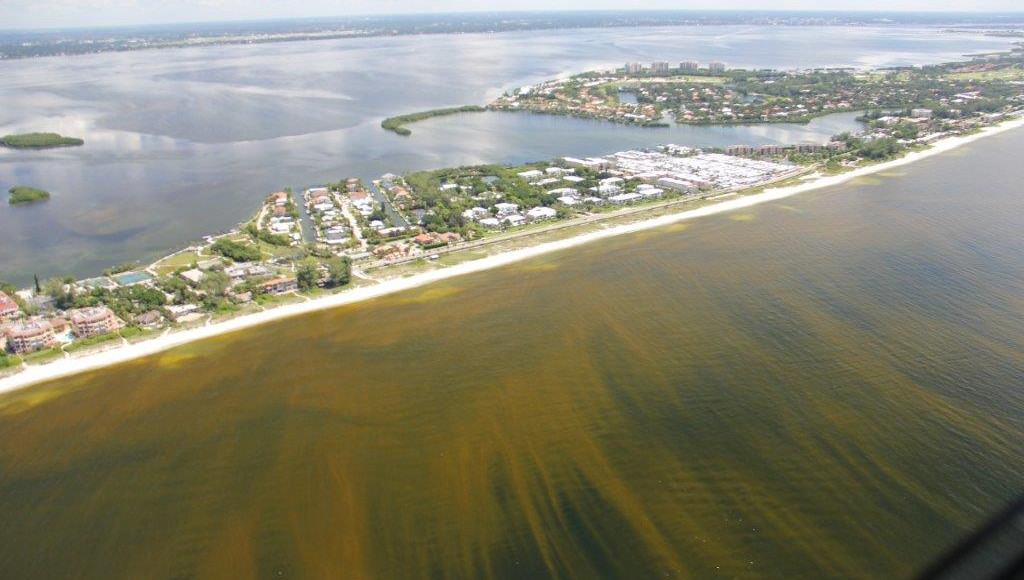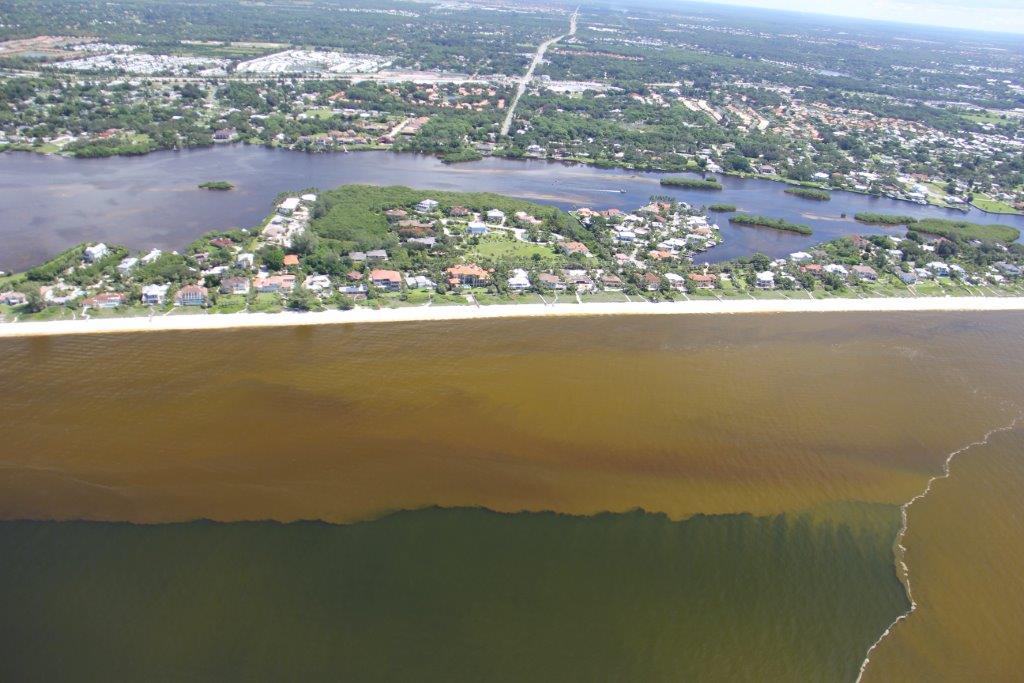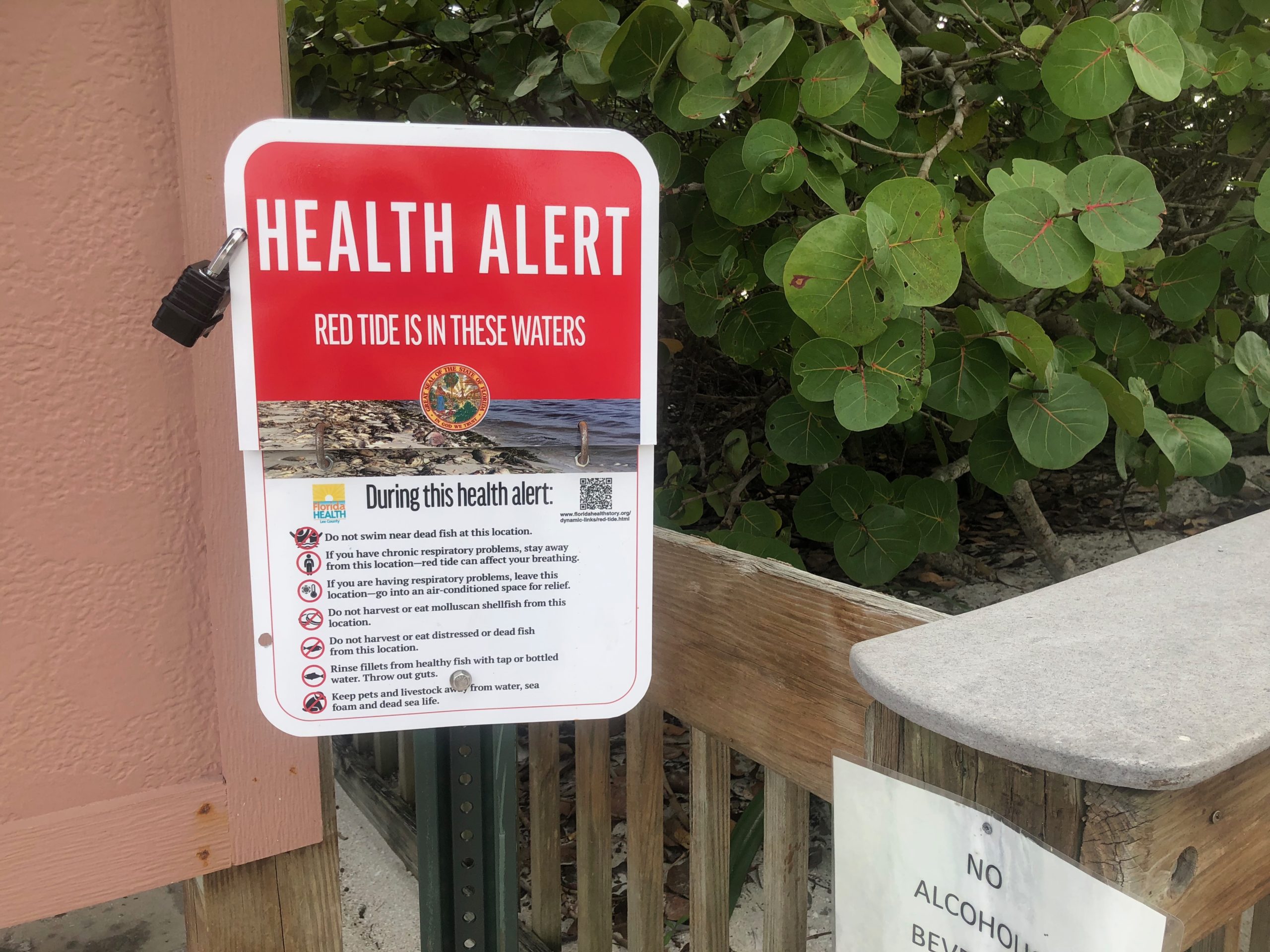- GCOOS-Florida Sea Grant Report Guides Development of New Red Tide Communications Plan for Florida

When, where and how red tides take place are of significance to residents, visitors, businesses, public-serving agencies and news media. Disseminating relevant red tide information to varying audiences requires a strategic approach ensuring consistency that hasn’t existed — until now.
For the first time, researchers have developed a communication model to provide a variety of Florida’s agencies with a statewide strategic infrastructure. The model also includes recommendations on how to streamline the process of providing red tide information to users in varying formats.
“Developing a Communications Strategy for Red Tide in Florida” is the culmination of a yearlong project led by Florida Sea Grant and funded by the Fish and Wildlife Research Institute (FWRI), an arm of the Florida Fish and Wildlife Conservation Commission (FWC). The plan was developed in partnership with the Gulf of Mexico Coastal Ocean Observing System (GCOOS), and more than 1,100 Florida residents and natural resources, public health, tourism, media, small business, and hospitality professionals contributed information to the project.

A red tide bloom off Southwest Florida between 2017-2019. Image by Mote Marine Laboratory.

A sign warns beachgoers about red tide on the beach. Image by GCOOS.
The result of the project is a robust collection of data delivered in nine public reports. Recommendations from the report will serve as a guiding instrument to the Florida Harmful Algal Bloom Task Force as they prioritize next steps. Contributing co-authors of the project are members of the University of Florida Institute of Food and Agricultural Sciences (UF/IFAS) and GCOOS.
“We hope this plan provides a positive step forward for red tide communication in Florida,” said Betty Staugler, National Oceanic and Atmospheric Administration (NOAA) harmful algal bloom liaison at Florida Sea Grant and the University of Florida. “Currently information is misaligned and inconsistent, and that contributes to skewed public perception from a health and business perspective. Accurate and effective communication is essential to achieving the balance needed for public safety and to protect the local economy.”
Key takeaways captured by the research team produced some common themes.
“Residents, businesses and visitors want real or near real-time information about where the bloom is and what activities they can safely engage in,” said Lisa Krimsky, the project’s principal investigator, and a UF/IFAS regional specialized water resources agent at Florida Sea Grant based in Fort Pierce, Florida. “We know that each agency disseminates content based on its audience and mission, which makes information hard to find and sometimes inconsistent. We also know that information is not currently provided at the spatial and temporal scales that users want, making it difficult for residents, businesses and visitors to make informed public health decisions.”
- Technologies and tools used to disseminate information did not provide users the ability to pinpoint affected areas in real or near-real time.
- Information on red tide was found to be inconsistent across agencies, resulting in mixed messaging and varied public perception.
- Terminology and content used to communicate about red tide was often too technical or difficult to find to be meaningful to residents and visitors.
- Flow of information was inefficient across agencies and partners, although significant improvements were made during the previous (2017-2019) red tide event.
- Coastal businesses perceived themselves to be impacted by the late delivery of information to the masses.
- The media remains one of the most important sources for red tide information for Florida residents and visitors.
“One thing that was really clear during the focus group conversations was that all audiences need and want information in as real-time as possible,” said Chris Simoniello, GCOOS outreach and education manager. “Getting real-time information in the hands of the public was the catalyst for GCOOS to create the Red Tide Respiratory Forecast (RedTideForecast.com) with our partners at NOAA, FWC-FWRI and other groups. It provides accurate information on a beach-by-beach basis in three-hour increments. Tools like this can inform residents, businesses and visitors, and protect public health while also being mindful of local economies that rely on accurate, up-to-date information.”
- Government agencies should look to natural disaster and emergency response plans to improve interagency coordination for red tide response in Florida.
- There is a need to strengthen communication networks and outreach to align messaging, and establish partnerships to disseminate the information in a streamlined format.
- Public education efforts could be improved through greater collaboration among stakeholder groups.
- Participant responses to online surveys of the FWC-FWRI, the Florida Department of Environmental Protection’s Algal Bloom Sampling Status Dashboard and the Mote Marine Laboratory Beach Conditions Reporting System websites indicated that navigation tools need improvement — information was complex and displays too much information for the public to capture. Suggestions included improving ease, effectiveness and user satisfaction.
- Messages should be customized for specific audiences, focusing on action-oriented behaviors that minimize personal impact and potential risk.
- Red tide information should be as localized and as real-time as monitoring data allow.
Researchers believe the data collected, coupled with recommendations and the strategic plan, come at an ideal time during a challenging red tide season for the coastal waters in the Gulf of Mexico.
“This year’s red tide started earlier than we usually expect, with blooms occurring in Southwest Florida as early as December and persisting today,” said Krimsky. “Because red tide moves with winds and currents, its distribution along the Gulf is patchy. The region has experienced fish kills associated with the red tide bloom, notably those in Tampa Bay during the summer.”
Data captured for the nine reports came from a variety of research methods, including numerous focus groups and surveys, to fulfill four objectives:
- Compile a review of current red tide communication and outreach products at the local, regional, and statewide level.
- Evaluate the public’s perception on the value and ease of use of existing red tide communication resources.
- Evaluate red tide information needs and wants, assess how demographics influence how red tide information is received and why certain delivery modes are preferred.
- Develop a communication strategy for Florida red tides comprising short-term event responses and guidance toward a long-term educational campaign, with both approaches using multilingual and multimodal outreach materials.
“You can’t have a one-size-fits-all approach. Red tides impact a lot of stakeholders. Information needs to be created and disseminated so that it is equally accessible and understandable for all of these audiences,” added Krimsky. “ Ideally, implementation of this communication plan will minimize public health risks while protecting our economic and ecosystem health.”
- The entire plan is available at: https://www.flseagrant.org/redtideplan/.













